
Nook Simple Touch w/ Glowlight is essentially a Nook you can read in the dark. It released in the Spring of last year from Barnes...
As we close into Christmas and get ready for the holidays, it seems the perfect time to take a step back and reflect on how the year has passed by. Did we learn any lessons; could we have done anything differently and more importantly, how do we utilize the knowledge that we have gained through the year. While you ponder these thoughts, let’s add the Panama Story to our list. As promised, here is the second installment to Dr. Prof. Peter Zec’s interview conducted in Essen earlier this year.
The wealth of knowledge that has been amassed by Dr. Zec is easily translated and understood by listening to this simple children’s story. No wonder he always narrates it to his students. This special podcast allows you to hear the story in totality and Dr. Zec’s narrative is very easy to understand and follow.
Moving on, I have broken down the interview into two sections and this one addresses issues like Innovation vs Being Different and how important it is for a designer to understand that design is a service for a client. Only when we understand the difference between art and design, can we apply the business angle to this industry.
As we know Dr. Zec is associated with red dot and is the main driving force behind the awards. I have seen him do his bit for the industry up close and one of the initiatives that he co-created is the red dot young professional’s entry slot. Basically 50 designers who have obtained their academic qualifications within the past five years, have the chance to apply for one out of 50 free registrations to the “red dot award: product design 2013”. Any designer worth his profession knows how coveted the red dot product design award is, and this platform encourages young talent to get the edge just as they embark upon their designing career. Good thing is that the application for this freebie is tomorrow 18th December 2012. Details for the same can be found here. Good Luck!
Previous interviews in this series:
Hideshi Hamaguchi, Yves Béhar, Karim Rashid, Scott Wilson, Robert Brunner
-
Yanko Design
Timeless Designs - Explore wonderful concepts from around the world!
Yanko Design Store - We are about more than just concepts. See what's hot at the YD Store!
(12 Inspirational and Exclusive Interviews on Yanko Design – Dr. Prof. Peter Zec (Part II) was originally posted on Yanko Design)
Related posts:
The second official beta of XBMC 12 "Frodo" is ready for testing, and if you've been waiting to move up from the nightlies you finally can -- as long as it meets a few requirements, like supporting Neon processor code (most HTC and Samsung devices do). There's a compatibility list of devices known to work, although there are known issues with Android 4.2 that won't be addressed until Beta 3. Also improved in this version is support for the Xbox 360 controller, no matter what platform you're using it on, along with some audio fixes and other tweaks. Hit the source link for the full list of updates or just go straight to the download page if your media device can't wait.
Filed under: Home Entertainment, HD
Development of the XBMC project has continued to roll along since Eden launched officially earlier this year, and now the first beta for v12 Frodo is live. Those who dive in will experience a slew of new features that have been trickling out in monthly builds recently, including support for HD audio formats like DTS-MA and Dolby TrueHD, live TV and PVR access plus versions for Android and Raspberry Pi. There's a long list of features to check out -- and known issues, this is a beta after all -- check out the official blog for all the details and to try it out yourself.
Filed under: Home Entertainment, HD
XBMC 12 'Frodo' Beta 1 appears, includes support for Android, Raspberry Pi, HD audio and more originally appeared on Engadget on Thu, 15 Nov 2012 08:24:00 EDT. Please see our terms for use of feeds.
Permalink | XBMC.org | Email this | Comments
XBMC.org | Email this | Comments I had the good fortune to spend a good hour with Dr. Prof. Peter Zec at the red dot design museum in Essen. Over a good cup of coffee and exceptional pastries, we spoke about how designers today are dealing with the increasing global awareness of Product Design. For those who don’t know Peter Zec is a former Icsid president and today holds the rank of Icsid senator. He is also the president of the red dot GmbH & Co. KG.
Before I head into the words of wisdom, let me tell you that to do full justice to Dr. Zec’s interview I am splitting it into two parts. After you have read the two editions you will know exactly why! For now, just read on.
It’s all about passion!
Designing is all about passion. Apparently Dr. Zec had been approached by Chinese officials to help create 100 or 1000 Steve Jobs. They wanted him to set up a school or conduct seminars that will help achieve this dream. However what the Chinese don’t realise is that to create a Steve Jobs, you need to go though the cycle of life that he went through.
“He did a lot of crazy and radical things that they don’t teach in China.”
You will be surprised to learn that Dr. Zec was 100% Communist who believed in the communist ideologies.

“I read all the Karl Marx books and I absorbed all his teachings. I too wanted to change the world because I felt that the world was not being fair to all. I had a very strange understanding of business. My perception thought that a business took away from the poor and gave to the rich. And I had the imagination that the rich do not work, they make other people work and pocket the profits. To me this was what the entrepreneur did. And I never had the idea of what real business was and this was my perception till I reached the age of 28.”
Life has strange ways of teaching lessons. At the age of 28, a very staunch communist Dr. Zec found that he had turned into an entrepreneur himself!
“I have studied media science, psychology and arts science and it was a study for 100% unemployment, so I tried to invent my own job. At that time the were only 3 broadcasting stations that were state owned and there was sure to be no job for me. I was looking for a safe job and I went to the cultural department of the city that I was living in and proposed to them that they set up a public holographic laboratory. I thought holography would be the new medium. The next big thing after photography! I went to the head of the department and asked if they could set it up. The head in turn told me that this could be a way for me to start my own business. I told him how was this was not possible since I had no money and skills or experience to do my own business. They sent me to a bank and helped with consultancy and this is how I began my career as a businessman. In my mind I was still a communist though.”
Slowly he transformed into a businessperson and a very successful German optician commissioned him to do some work for them. The owner invited him to become the creator of holography for one of their exhibitions in Hamburg.
“I was the chief creator and I earned a good amount of money for it. At that time I observed this person (his sponsor) and I said to myself that hey, this person works very hard and at sometime he doesn’t sleep. So he doesn’t take money from somebody else or deprives the poor. He is responsible for his own job. So that changed my views on business.”
I was a fascist!
His Communist attitude is not the only thing Dr. Zec had to change; he had to let go of his fascist perception of art.
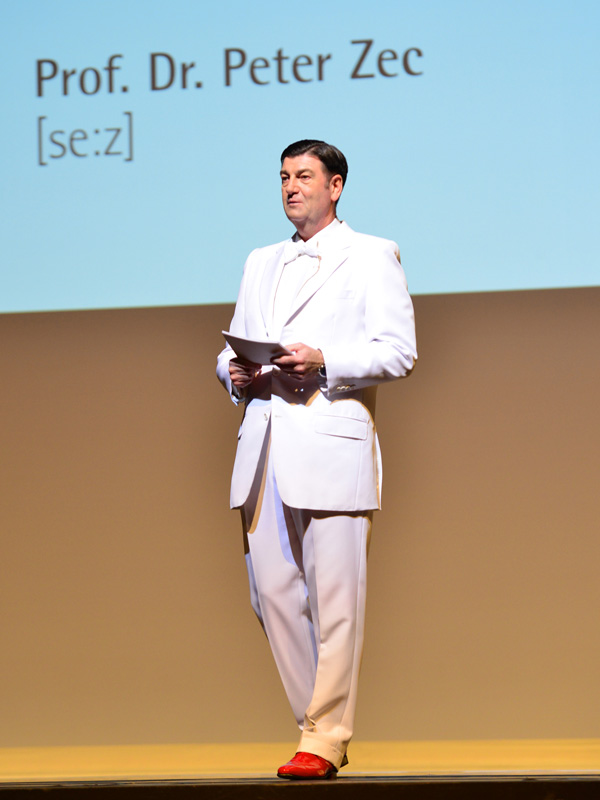
“I was very idealistic about art. People can be fascist about art. I had a very clear understanding about what is good art and was always defending my perception of good art. I was fighting against others for their views on art.
The time that I realized I was following the wrong values was when I was asked to create holography of naked women by my sponsor. He had booked the Hamburg museum at that time, and the director of the museum was an authority on good art. I did not agree with the concept of showcasing naked women, but I had to do the job since I was on a payroll too. My only chance at stopping this exhibition was to speak to the museum director and convince him that the show must be not put up. But do you know what the director told me? He said that ‘Who cares if it is naked women as long as they are done beautifully and depicts art.’ That is the turning point for me, when I realized that I needed to give up on my outdated ideologies and adopt one that is more conducive and open-minded. I had the wrong values.”
The worst thing for a student is to have an ideology in their mind and fighting against others. You should always fight for yourself rather than fighting with others, it is waste of energy.
“If you use this same energy on yourself then it is following your passion and achieving your goals.”
Dr. Zec advices not to waste the time in criticizing other people’ designs and to focus on your own thing.
“Designers are some times are too narrow minded and focused on a single object. But the object is most often placed in a larger environment. As designers, it should be good to have the broader vision kept into perspective and this is unfortunately not taught in schools. Designers think design is always about making the shape and form of a product. This is from old school, today design starts from a totally new form of understanding and what it means in the modern world.
We have to think from dependences and relationships towards other environments and factors. Design has to do with cultural development and social changes in society. These things play a lot of role and this is why designers should read from other disciplines and even be political. They should try to understand the world and with this kind of understanding you will end up designing totally different products.”
Hence a man like Steve Jobs had a clear understanding of the world, and he was fighting for his ideas. He probably did not like Microsoft so much or Bill Gates but he did not fight them.
You don’t need to love everybody. You must simply accept them.
And fight for your own ideas! Steve had his own idea of the internet and this brings us to the question why did why Sony not invent things Steve did ?
“Sony had all the rights and the music. But Apple has iTunes and the iPods, think about it. Steve Jobs looked at this from a broader angle while Sony only focused on the narrow angle of how can we make money from the music we have and not try to lose too much. It is important for designers to change their viewpoint and think form another direction or a new angle.”
To sum it up, Dr. Zec is trying to tell us that it is never too late to let go of old and redundant ideologies. We must focus on our strengths and not worry about others. It is imperative for us to keep a broader perspective in life and not be to narrow about design. Look at the whole picture and not just the speck.
Stay tuned for the next edition; you simply have to hear about the Panama Story!
And one more thing…Dr. Zec thank you for wearing those red shoes!
-
Yanko Design
Timeless Designs - Explore wonderful concepts from around the world!
Yanko Design Store - We are about more than just concepts. See what's hot at the YD Store!
(12 Inspirational and Exclusive Interviews on Yanko Design – Dr. Prof. Peter Zec (Part I) was originally posted on Yanko Design)
Related posts:
So far we have had four awesome designers share their wealth of experiences in this Inspirational and Exclusive Interviews series. Robert Brunner spoke about the core DNA of a designer/entrepreneur; Scott Wilson showed us how to rise from the ashes like a phoenix; Karim Rashid taught us his roadmap to success and Yves Béhar spoke about forging partnerships. My recent visit to the red dot award ceremony for product design at Essen, brought me face to face with the charismatic Hideshi Hamaguchi, the inventor of the USB Stick. Yes, the very same stick you use to store data, transfer files etc.
I could not let this opportunity pass up as I knew Hideshi’s perspective on innovation and design would be priceless and moreover his methodology and approach is so unconventional and inspirational, that it has to be shared.
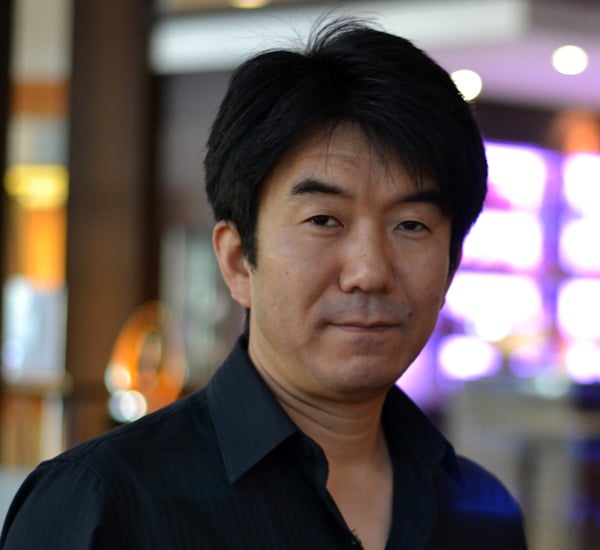
To give you a background, Hideshi Hamaguchi is a chemical engineer and a math’s champion in Japan. He started his career in Panasonic as a researcher and after three years of working with the company he found something critically missing in the work environment and corporate setup. He realized that the company made no provisions to breed creativity. There was a lack of a logical approach to expanding the team’s resourcefulness.
Creativity for Hideshi is very intuitive based, however there were no concrete steps by the company to explore this aspect. He sought to formulate an approach that would expand his and his group’s creativity. And thus transitioned from a researcher to an analyst and then went to become a creative strategist.
I cannot draw!
Despite the fact that Hideshi has more than 120 innovations to his credit, it comes as a big surprise to me that he cannot draw! I had 2 Nikon cameras and an iPhone with me, and Hideshi, without naming them (confidentiality clause) told me that I was using 5 of his innovations at that very moment! According to him, if you don’t have the talent for drawing but are good at strategic thinking, then you can still become a great product designer. All you have to do is connect the design to the strategy and then turn into a language the company management people and the consumer can understand.
To sum up Hideshi, he is a creative thinker, a strategist, and an innovator who follows a process, which has a practical approach. His process theory is teachable and learnable, which is why he lectures around the world and conducts workshops.
How can people be creative without drawing beautiful pictures? What is Creativity?
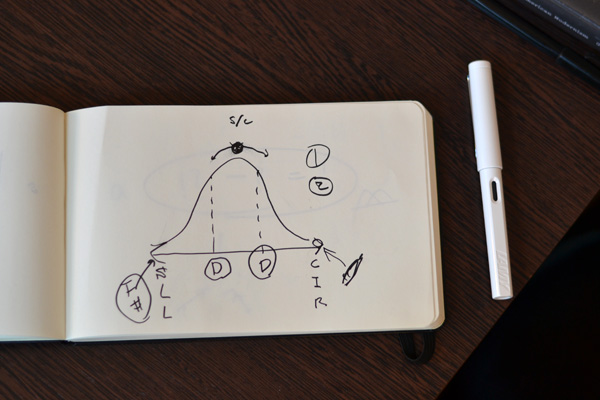
You have to train yourself to draw diagrams and doodle.
Creativity is all about people’s mindset. Creativity doesn’t exist in the air. It’s in your mind, and even when we are collaborating, I am stimulating you and your outcome is stimulating me. To understand creativity we need to understand the brain.
Hideshi explains that the brain has two extremes: the structured thinking, which is very logical thinking versus the very intuitive and chaotic thinking. One side is focused while the other is all about exploration. The ideal balance between structured and chaos thinking is peaked at the sweet spot of Structured Chaos Mode, right on top. But this position is like a volatile ball that rolls in either direction, depending upon the individual’s inherent nature. To keep it balanced at the peak, you need to do something radical. From Hideshi’s experience the profile of moving from chaos to logical thinking to strike the structured/chaos balance, is wrong.
If the highest form of creativity is at the structured chaos mode, how can we manage it?
Technically there are two ways to manage it, first way: go back and forth between logical and chaos thinking, till you achieve the peak. Example, say I ask you to innovate a pen and present it to the red dot jury in one hour’s time. And after you do that, now I ask you again innovate the pen, but his time, I give you a day for it. The first day is to draw inspiration; the second day is to create some structures and ideas etc, till finally you give me the design. So stimulating the brain between the chaos and logic thinking, will peak your creativity to the structured – chaos mode.
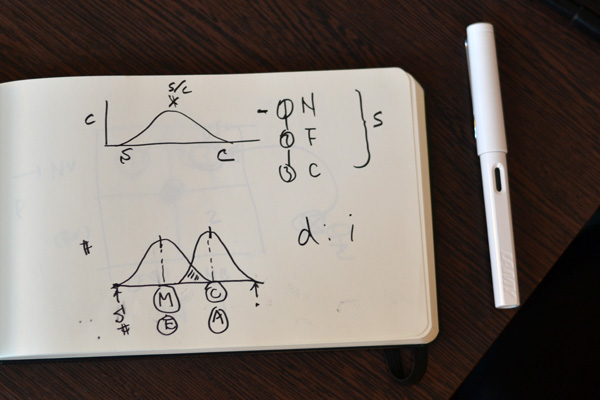
The second way is to use a formula or some data analysis, example market size or market tastes for pens as a reference, and then combine it by drawing some beautiful lines that ultimately lead you draw some innovative features for the pen. So you make your brain use the logical and the intuitive side, at the same time. And thus you can hit the sweet spot. But in reality, you need to do diagram and you need to doodle to hit the sweet spot. Diagrams are something simple, something logical, and something visual. Draw the diagram and your brain goes to the logical side without being too intuitive, now to balance this you need to doodle. And this stimulates the creative brain.
So intentionally use diagram and doodling to keep creativity on the top. If you really want to have the highest level of creativity especially for a new idea or concept you don’t have to have the skill for drawing beautiful pictures, someone else can draw it for you. And the good thing is you don’t have to learn too many logical things either.
Since Hideshi is an innovator, I had to ask him…what is innovation?
Formula for Innovation : !? – ? = !
What – Oh this is the reason = Aha!
This is what Yanko Design is!
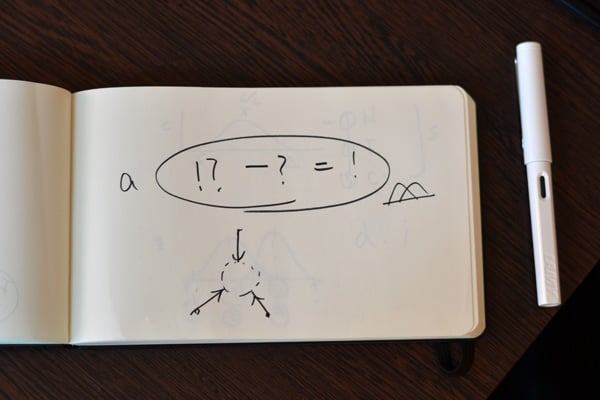
Innovation is all about creating new behaviors and new values for people. For example the USB Dongle. It created a new value of keeping your data on a small stick that was portable and new behavior, as in attachment to your data, sharing it with people and friends. In 1999 Hideshi came up with the idea for a client, of adding a tangible feeling for your data (he called it the sneak-kernet), we had that feeling for the floppy disk or the CD but it was time to move on to something different but no one agreed with him. At that time everyone thought that everything was going to be on the Internet and wireless so a cloud storage medium would have more value than this.
Even Intranet faced this issue. Hideshi and his friend are responsible for creating the first intranet in Japan. And probably the first in the world, it was done in 1993. He did it for Panasonic, where the board members were not so very computer savvy. If you see it this ways, intranet changed the behavior in people and the value for information.
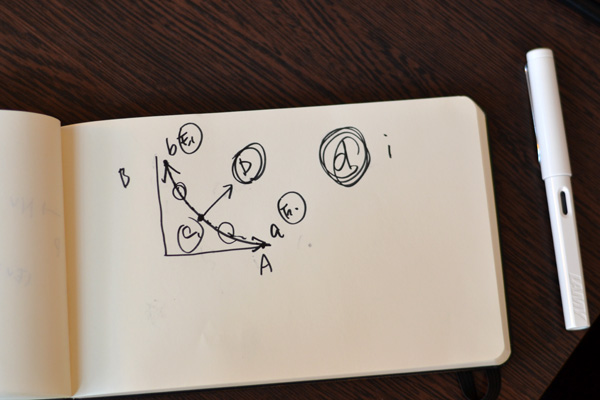
Innovation is something that is something new; something that is doable and it should create controversy. It should create some tension in the conversation. One advice that Hideshi gives is that when you are brainstorming for creating an innovation; never focus on the idea itself, because that usually never helps. His focus is to analyze and see how people think. If you can analyze their thinking you can break the paradigm and go against their bias and thinking. You break the bias and push yourself towards the controversy thinking; this is how you break the paradigm. But if you cannot visualize the bias or the thinking of people, then you will not be able to innovate. You have to break the abstract things; you have to understand the way of thinking and visualize the pattern. If you visualize it, you can be a wonderful innovator. So basically you need to make a shift and break a bias, and this is the biggest barrier that innovators face.
Earlier in the 90’s the shift was focused only on technology innovations for computers, faster CPU, better inputs etc. but in comes Dell and they created a new shift with their business model. They revolutionized their supply chain, the customer experience and online customization of the PC. This was breaking the paradigm.
Engineer-designer conflict!
How to create a balance when you have to present a design or an idea so that appeals to the technologist and the corporation managers; in short how to address the engineer-designer conflict?
When we chart the Structured chaos diagram in a real life situation, unfortunately most of the population lies with the intersection of two structured-chaos loops. Majority of them don’t think super-structured or the other extreme of super-intuitive thinking. The problem is that we don’t have many people who can handle the structured chaos mode. Corporate mangers and engineers are more inclined towards structured thinking and designers and artists are more inclined towards intuitive thinking. They are two different animals!
And as he explained earlier, the engineers and corporate heads tend to use numbers and the designers use images; hence the dialogue cannot be bridged. They are disconnected and there is a lack of communication. But if we lay some ground rules, a common language can be spoken, for example the corporate manager should refrain from asking the designer about numbers and cost calculations, where as the designer should go deeper and relate a story rather than just talking about intuitive design.
Logical and intuitive people both can train themselves to move towards the balance sweet spot of structured chaos by pushing their boundaries and moving towards the other side of the graph.
The reason why Hideshi is ahead of his game is that while each person who he works with, specializes in their one field with total focus on it, and Hideshi has the ability logically connect the dots between innovation, marketing, strategy, tactics, uncertainty, technology and business model.
Special Thanks to red dot design, Germany and Dr. Professor Peter Zec.
-
Yanko Design
Timeless Designs - Explore wonderful concepts from around the world!
Yanko Design Store - We are about more than just concepts. See what's hot at the YD Store!
(12 Inspirational and Exclusive Interviews on Yanko Design – Hideshi Hamaguchi was originally posted on Yanko Design)
Related posts:
For the next in our series of 12 Inspirational Interviews, I speak with Yves Béhar of fuseproject. Yanko Design has been reporting his work for many years, but surprisingly this is our first interview with him! Going with the theme of this series, it’s my mission to bring to you meaningful lessons that no design school or institution teaches you. In his no-holds-bar conversation Yves speaks about taking risks, doing things differently and overcoming hurdles. Do you know why he is called the ‘Evel Knievel’ of design? I do! Read on to find out more….
A product, is a product, is a product!
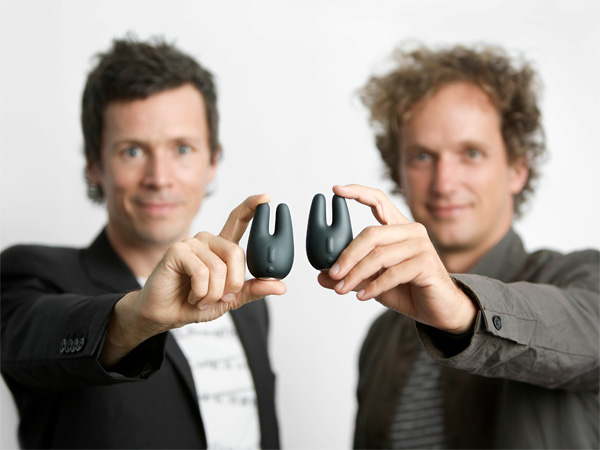
Yves Béhar needs no introduction, so I dive into the interview with hard questions like why he designed the JimmyJane Vibrator! I mean, did he not take a risk or feel awkward? After all sex toys are not exactly on high-priority list for many designers!
“I have been interested in design products like JimmyJane since 2000 or 2001. I am always excited about product categories where design can make a huge difference and where the expectations are so low. In this industry, people are doing things that are so contrary to what the modern notion of good design is. High quality materials, high quality products were completely absent from this industry and so I have always thought it would be interesting to change it. My friend Ethan Imboden (of JimmyJane) and I finally decided to partner together. Initially we were supposed design just one product, but we soon realized that not everybody is the same or likes the same things. So we built a modular inner mechanism and designed it to fit different forms. There are different approaches to design the same thing!”
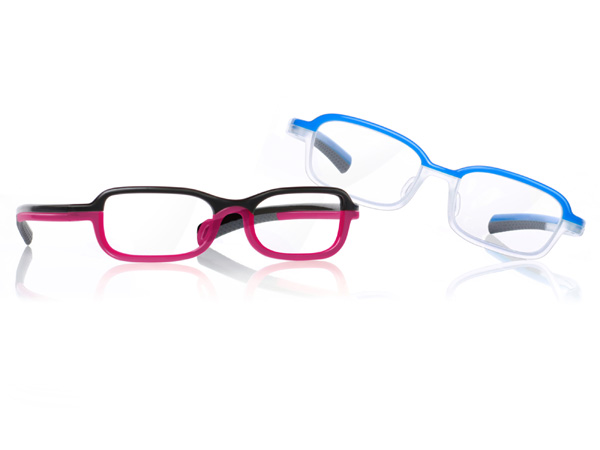
“A lot of people shy away from designing a vibrator but to me it’s the same approach while designing a high quality cellphone or high quality speaker. For me honestly, a product is a product is a product! It just needs to deliver. The fact that it is associated with human sexuality does not make it any more or less interesting.”
I guess Yves is being a bit modest here, but he was in many ways responsible for revolutionizing the approach and perception people had towards pleasure toys. He infused sophistication and elegance to the genre.
Don’t be afraid to explore avenues where no one else has chartered! Be a risk taker!

Risk taking has always been a hallmark of Yves’ work and how he approached clients and partnerships, even before he started fuseproject.
“I was a product designer in the Bay area and with product design; I was taking so many risks with projects. My focus was on making things more unique and standing out that they used to call me ‘Evel Knievel.’ They couldn’t pronounce my name, so Evel Knievel was my nickname even before I started fuseproject independently. Design is about risk taking and it can’t work without risk taking. I was working at that time Silicon Graphics, Acer and HP on GPS projects. All my works were worth the risk.”
I asked him to elaborate further on this….
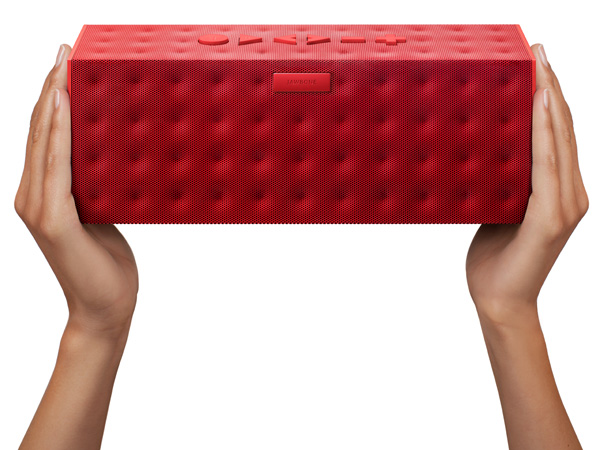
“Design is sometimes undertaken 2-3 years in advance of a project hitting the market. So you need to be designing for a future market and future user experience. You have to project yourself in the future. So that means there is an inherent risk in what you design. If you are not taking risks, in my opinion, your project may not be successful. And if it will not feel advanced it will not feel differentiated, it will not feel like the next generation of anything. So risk taking is a fundamental line in our business and I feel comfortable taking risk in design and we have gotten very big rewards from that.”
A good example of risk-taking is the Jambox they launched last year. Nobody had thought it would be possible for them to launch a speaker especially since they were not a major brand. Between the design and the user experience and the onset of the mobile based experience, the Jambox became the number one speaker in the US in its categories.
Yves employs the same risk-taking attitude with his partners Jawbone and Herman Miller. Unfortunately not many companies are willing to take these risks with you. A lot of companies play safe but Yves thinks this a lack of vision for a leading 21st century based business.
A mixture of risk, talent and hard work is the right approach.
According to Yves, a designer needs to be creative with business side of design as well. It is not enough to be creative with the design side only!
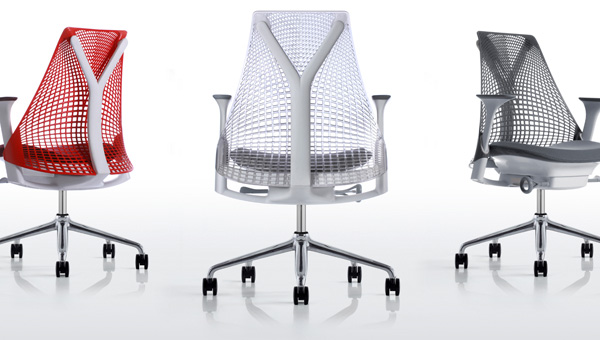
“When you create partnerships there will be no set calculation, which means you have to listen a lot closer and understand better your clients business. How as a designer will you bring value and what that value is going to be worth if the project is successful. Every company is at a different stage and so it really depends how creative you can get. Most designers are very formulating on how they approach businesses, but the need of the hour is to get creative with this aspect too. The angle which they consider the boring part – the running of the company!”
According to Yves, the different approaches to partnerships are through equity or becoming a co-founder or getting fully integrated in the business. Getting some fee or retainer-ship or royalty is also essential.
“The mechanism has to work for the short term, the midterm and the long term. It can’t be just hoping for just long term returns. You have to be able to mix the different types of rewards. It isn’t a formula, it depends on every situation.”
Yves warns that partnerships are not about establishing a contract, they are also about establishing long term trust. “You can test that over a short period of time. You need to evaluate how somebody meets their end of the bargain on an ongoing basis and not just at the end of a contract.”
“Herman Miller and I have been working together for 10 years now. For me they are the design ambassador company of America. Sometimes it’s not about responding to a brief but coming up with a brief by yourself and for us it has become a symbiotic relationship where we understand and respect each other a lot. I have done close to 20 partnerships to date and I have to say that at least 8 out of 10 have been quite satisfactory on every level. The ones where I was not happy with, was when the founders did not have the experience or the courage to go all the way through with things. They did not have the foresight of how to be the CEO of their company.”
Did you know that Yves had to work on his drawing wand was a pretty average draftsman! The skills he had to work on were presentation, drawing and talking! Look at him give lectures around the globe, and you will find it hard to believe that he was once shy.
My only original talent is perseverance!
Parting shot : this profession needs new perspectives, so keep taking risks and be true to your work!
-
Yanko Design
Timeless Designs - Explore wonderful concepts from around the world!
Yanko Design Store - We are about more than just concepts. See what's hot at the YD Store!
(12 Inspirational and Exclusive Interviews on Yanko Design – Yves Béhar was originally posted on Yanko Design)
Related posts: